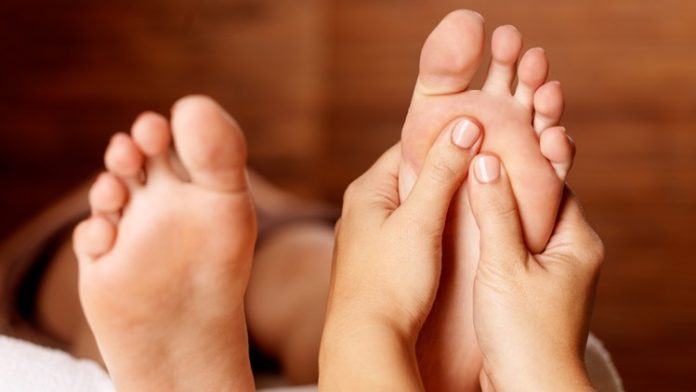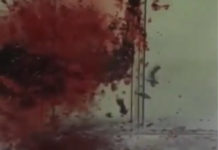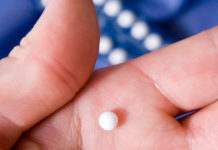Reflexology alias touching therapy- an ancient form of foot massage is the application of appropriate pressure to specific points and areas on the feet with specific thumb, finger and hand techniques without using any oil or lotion. In other words, Reflexology is a therapeutic method of relieving pain by stimulating predefined pressure points on the feet and hand. It has been practiced for thousands of years for preventing illness and for promoting good health. This alternative form of medicine has many beneficial and therapeutic effects to maintain the body’s natural balance. Reflexology massage techniques and sequences can be used to get relief from the symptoms of stress, head ache, stomach disorders, illness etc.
According to reflexology theory, there are several reflex points and areas on the feet, hands, and ears, which are directly connected with all major organs and parts of the body by ‘energy pathways’. It is believed that illness, injury or disease can result in granular accumulations around the reflex points, which may block vital energy pathways. While applying pressure to the reflex points, these blocks can be removed and it allow the energy to flow freely and also improve blood circulation. It is claimed that the pressure received in the feet may send signals that ‘balance’ the nervous system or release chemicals such as endorphins that reduce stress and pain. Even though reflexology is combined with massage, technically it is not a form of massage. Reflexology only applies gentle manipulation or pressing to the reflex zones on the feet, hands or outer ears to affect the entire body.
Reflexologists are medical professionals who relieve stress and pain in the body through manipulation of the feet. Reflexologists manipulates the reflex/ pressure points according to specific techniques of reflexology therapy. They work from maps of reflex points that are located on the hands and feet. Reflexologists mainly work on the feet, but they also work on other parts of the body such as hands, face and ears. They divide the body into ten equal vertical zones, five on the right and five on the left that are used to locate specific areas of the body. Reflexologists apply pressure to these points systematically over a few days, which are believed to cure the disorder of the associated organ.
Roles and responsibilities of reflexologists involve:
- Taking detailed medical history of the client such as health, diet and lifestyle etc.
- Explaining the treatment method
- Before carrying out treatment, they should examine the client’s feet and hands for possible ‘blockages’ and problem areas
- Appling pressure with the thumb and fingers to all areas of the client’s feet and hands
- If appropriate, show the client simple reflexology techniques to use at home between reflexology sessions
- Maintaining full details of client’s treatment records
- If necessary, referring clients to their general medical practitioner.
Reflexology is not a beauty therapy or a foot massage but is a holistic treatment with some scientific evidence of effectiveness. It helps people to relax and unwind and allows the body to function more effectively. Although reflexology is not used to diagnose or cure health disorders, millions of people around the world use it to treat wide range of health conditions such as headaches, migraine, sinus problems, arthritis, hormonal imbalances, circulatory problems, digestive problems, back problems, injuries, tension and anxiety, menstruation and fertility issues insomnia and stress-related disorders etc.
Those who have an interest in alternative medicine can become a certified Reflexologist. Just a few institutes in India offer short term degree, diploma, certificate and training courses in Reflexology. Alternative Medicine College – Coimbatore; AIM Spas and Academy Pvt Ltd – Chennai; International School of Aesthetics and Spa (ISAS) – Pune offers certificate course in Reflexology. Dr. Praveera’s Institute of Herbal Solutions (DPIHS)- Chennai ; Acupressure Research, Training and Treatment Institute- Jodhpur offers short-term diploma course in Reflexology which lasts for 2 weeks to 3 months. The basic requirement for joining any of these courses is 10+2. Besides these, several Massage therapy schools and Ayurvedic and cultural centers also offer short-term training in basic reflexology that may last for 4-10 days.
Reflexology can also be pursued through Distance Education. Indian Board of Alternative Medicines- Kolkata offers 2 year Bachelor’s degree (B.R.T) and 1 year Diploma course in Reflexology through Distance learning. Acupressure Research, Training & Treatment Institute- Jodhpur provide both regular and correspondence short-term Diploma in Reflexology (D.R.T.). The duration of regular course is 1 Month, (15 Days, Daily 2.00-2.30 hours theoretical, practical and 15 Days Self Practice) and that of correspondence course is 2 Months. For correspondence, the institute will provide study materials such as Books, Chart and Instruments. After completion of the course, the institute conducts a test by sending the Question paper along with an answer sheet by e-mail. The candidate should deposit the answer sheet for getting the certificate.
Ayurveda House, Dharamsala; Pristine Senses Academy, Mumbai; Aithein, South Goa are some other institutes that offer Reflexology courses.
Course area: A reflexology program must provide not only technical training you will need to do the job, but also fundamental business concepts and other essential aspects of the profession. Reflexology course covers topics such as Definition and meaning of Reflexology, History of Reflexology, Anatomy and Physiology of Reflex Zones, Theory of Reflexology, Benefits of Reflexology, Contra-indications to reflexology, Mapping of the Feet, Guidelines on the foot, Reflexology Chart, Reflex and Acupressure Points, Techniques and Movements, Practice of Basic Reflexology, Steps of Foot Reflexology, Different organs of the body etc. The course offers both theory classes and practical training. By studying reflexology course students achieve knowledge about how to improve the overall health of an individual by the therapeutic technique of reflexology and realize how pressure is applied to specific reflex areas. By practical training, student learns how to reduce stress by using the thumb, fingers and hands for a variety of methods. The foot reflexology course imparts the students that reflexology can create physiological improvements within the body.
Skill set required for a Reflexologist
Reflexologists should have
- Good communication and listening skills
- A good understanding of human biology and anatomy
- Genuine desire to help people
- Ability to develop empathy with clients
- Ability to inspire confidence in clients
- Hands-on training is extremely important
- Good co-ordination and practical skills
- Know when to refer a client to a qualified medical doctor
Business and marketing skills are also essential for a self-employed therapist.
The ultimate purpose of the therapy is to promote wellness; fundamentally it is a form of preventive therapy. In a typical reflexology treatment, the therapist and patient have a preliminary discussion prior to therapy, to enable the therapist to focus more accurately on the patient’s specific complaints and to determine the appropriate pressure points for treatment. A reflexology session involves pressure treatment that is most commonly administered in foot therapy sessions of approximately 40-45 minutes in duration. Foot therapy may be followed by a brief 15-minute hand therapy session. No artificial devices or special equipment are associated with this therapy. The human hand is the primary tool used in reflexology. The therapist applies controlled pressure with the thumb and forefinger, generally working toward the heel of the foot or the outer palm of the hand. Most reflexologists apply pressure with their thumbs bent; however, some also use simple implements, such as the eraser end of a pencil. This is a completely natural therapy that affords relief without the use of drugs.
A Reflexologist can work in a variety of medical settings such as Hospitals, hospices, practices attached to GP surgeries, Nursing Homes and natural health centers or complementary medicine (aromatherapy, massage therapy or reiki healing) clinics. They can also work as a therapist in therapy centers, health Spas, Beauty Salons, fitness centers, Sports Centers, luxury hotels and cruise ships. Reflexologists can work as a freelancer and have treatment rooms in their own homes or work in rented premises, or visit clients in their home. To be successful as a self-employed reflexologist, one must need to build up and maintain a sound reputation and client base. With experience and further training, one could teach reflexology. Along with reflexology, one can go on to train and qualify in other areas of complementary therapies like aromatherapy, massage therapy or reiki healing. Nurses and health care workers can also practice reflexology to earn additional income. medical centers.
The remuneration of a Reflexologist mainly depend on the number of patients they treat in a day. The working hours of a reflexologist depend on the number of treatment sessions and it may vary according to individual requirements. Most reflexologists are self-employed and can charge for each session. Usually a reflexology session lasts from 30 to 60 minutes. A reflexologist can charge anywhere between Rs. 200 and Rs. 500 per session. At the initial stage of their practice, the income may be low, but can earn more with years of experience, reputation and regular clients.
For the details of colleges/ insitututes conducting Reflexology Courses, click on the following links.
- Diploma in Reflexology
- Certificate Course in Acupuncture and Reflexology
- Bachelor in Reflexology
- Basic Acupressure Reflexology and Magneto Theraphy
- Basic Course in Reflexology
- Certificate in Ayurvedic Reflexology
- Certificate Course in Reflexology and Acupressure
- Diploma in Reflexology (Correspondence/ Distance Education)
- Bachelor in Reflexology (Correspondence/ Distance Education)
- Certificate Course in Foot Massage and Reflexology



















































